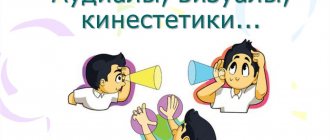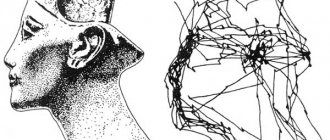The first interpretations of the concept under consideration
They are indicated in the first dictionaries of the Russian language of the 11th – 12th centuries, namely:
- reason, prudence, intelligence are wisdom;
- scholarship, body of knowledge - great wisdom;
- moral perfection, spiritual purity - humility;
- religious piety is wisdom;
- mastery, perfection, skill - perfect wisdom;
- slyness, trickery, cunning - sophistication.
Modern interpretation of the concept in question
Wisdom is the ability to competently apply one's knowledge. This concept also means a deep mind, which is supported by life experience; the ability to find solutions in the most difficult situations; understanding the essence of what is happening.
Wisdom is a person’s valuable ability to both think deeply and act in accordance with high life goals, while being above limited private, transitory interests, including one’s own. This is the initial impulse of the evolution of philosophy, the final synthesis of its directions.
According to M. Epstein, this concept is interpreted as follows:
- Wisdom is the deepest knowledge, the required ability to use it effectively and masterfully.
- This term implies the ability to separate the unattainable from the inevitable; give up the first, come to terms with the second. Constantly balancing on the edge.
- Wisdom is a thirst for knowledge and world events that comes from the heart and soul. Epstein believed that a wise person has such intelligence because he is interested in everything.
- He called it a lack of narcissism, a willingness to admire and admire others, this is the look of a child with adult actions.
- The wisdom of a person is his ability to find in another, any phenomenon, what needs to be learned. Usually, know-nothings teach others.
- Wisdom is interpreted as a correct understanding of the values of life, an intuitive foresight of the probable only correct development of the situation.
Does everyone need to become wise?
Wisdom leads to a certain way of life, during which a person refuses to satisfy his sensual desires. Until a person extinguishes the flame of desires within himself, he will not be able to become sages.
The sages say that the flame of desires can be extinguished either by completely stopping adding oil to it, or by pouring oil on the fire so that the fire goes out. Oil is pleasure, and fire is our desires. While this fire burns inside the heart, it will be almost impossible to live in accordance with wisdom, since there will be neither self-control nor peace.
To get rid of desires means to stop receiving pleasure and to contemplate the object of desires. While at home, you may not eat very much, since at home you eat mostly simple food, which is useful and necessary for the body, but does not satisfy the senses at all. However, when you go out for a walk in a crowded place, your eyes come across large posters with juicy, bright and unhealthy food. This is how desire arises, which personifies the fire in the heart. Being not extinguished, he starts a fire, but being satisfied, he calms down only for a while, after which he again demands reinforcements. To get rid of desires means to stop thinking, striving and contemplating the object of desires. This requires discipline and self-control. But any desire associated with feelings can fade over time.
Pouring oil on a fire means immersing yourself in the fulfillment of your desires, realizing that satisfaction of feelings cannot bring happiness. Having tasted an attractive-looking cake, but felt the disgusting taste, you immediately lose the desire to eat it again. For this reason, a person who is unable to get rid of his desires either through knowledge or through discipline and volitional efforts should understand in practice the impossibility of satisfying the senses and obtaining happiness from them. Desires bring only suffering to a person, forcing him either to be unsatisfied or to work incredibly hard in order to achieve an ephemeral goal, which will again and again move away from the person, like a carrot in front of a donkey’s nose, tirelessly dragging the cart forward. This is Sisyphus's work .
Thus, a person who is unable or unwilling to stop his desires and sacrifice them to the spiritual path cannot gain wisdom, since it contradicts the path that is most important to him. Instead, he should act according to his nature, take his responsibilities responsibly and fulfill his duty. When feelings calm down over time, wisdom will reveal itself to an honest, diligent person, giving him the opportunity to begin to comprehend wisdom.
Read also: Chinese mafia or triad
Not everyone needs wisdom, because, in fact, not everyone wants to comprehend it. It is impossible to achieve it without sacrifices. And since it is necessary to sacrifice desires, attachments, views, ideas and worldviews, this path will only bifurcate and stagnate a person. In this case, he should simply honestly fulfill his duties and bring benefit to others through his actions, gradually abandoning both bad habits and bad behavior.
So, wisdom is a quality that comes from experience, knowledge, other qualities and understanding . Wisdom opens up the opportunity for a person to live happily, finding satisfaction and happiness in himself. Comprehension of wisdom is the process of comprehending knowledge, cultivating positive, good qualities and getting rid of low, vicious ones, as well as gaining and correctly understanding the experience gained in the course of life. However, not everyone really needs wisdom, since it requires great sacrifice.
The willingness to make such sacrifices indicates a readiness to embark on the path of attaining wisdom.
Benefits of Wisdom
It gives the following:
- a basis for improvement, teachings that are never-ending;
- food for the mind, soul;
- the ability to both see the present and foresee the future;
- freedom from passions, bias, unnecessary emotions;
- independence, since a wise person is never attached to luxury;
- understanding the logic of what is happening around.
Distinctive Features of Wisdom
True wisdom does not tolerate Excess, Boasting and Boasting. Modesty, inherent in Wisdom, is always held in high esteem by people. There are not very many wise people. Wisdom is infinitely Good and Selfless. You can't get rich with wisdom. This is not a process of acquiring material things, but of liberation. The experience of Wisdom comes in difficult times, people then become wiser when they are deprived of something.
Wisdom understands that there is no need to bend the World to suit you, change and control others to please your ideas of how to live correctly. There is no need to attribute to others what you want to see in them, there is no need to burden them with your false expectations. A distinctive feature of Wisdom is the spiritual and internal wealth of Man, and not the external.
Wisdom of life: what is it?
It is interpreted as the ability to competently use acquired knowledge. The path to great wisdom is thorny and tortuous. But do not forget that it is possible to overcome it. To do this, you will first need desire and several other points.
Life wisdom is the deepest knowledge and understanding that comes, as a rule, in adulthood. It brings joy to life only if a person knows how to share it.
According to statistics, women are the most likely to gain wisdom. Such understanding occurs regardless of one’s social position (it is not necessary to have a higher education for this). Worldly wisdom is an unpredictable phenomenon.
Wisdom originates in close attention to one's own person. People become calmer and more balanced if there are no evil forces such as envy, hypocrisy, hatred, and lies in their environment. In the absence of falsehood and lies in interpersonal relationships, each person becomes closer to wisdom.
Main thought
Wisdom and knowledge are closely interrelated. Wisdom is about putting into practice the information gained through the pursuit of knowledge. In any area of life—especially business and finance—possession of both knowledge and wisdom is the key to success.
Useful tool Board coaching game “Achievement” A powerful tool for group or individual work as a coach or business trainer. Find out the details
Wise woman
She is incredibly attractive to every man. A wise woman conquers the stronger sex again and again. She realizes that a man never fully matures. He is quite easy to offend. It is necessary to have generosity, a sense of humor, and intuition in order to understand him and then forgive him.
A man should always feel exceptional, unique, irreplaceable of his kind. He is delighted when he hears flattery, compliments and words of gratitude in his direction.
A wise woman is always necessary for the colleagues and co-workers around her; they should know that they can come to her for advice and share their experiences. Her opinion will have significant weight for them. Grandchildren, children and loved ones will gather next to such a woman even in old age.
Bridging the Gap: Turning Knowledge into Wisdom
It is much easier to seek and receive knowledge than wisdom. Consequently, there are many more “smart people” in the world than “wise men.” However, with the necessary knowledge, bridging the gap between adequate information and its intelligent application is quite simple. Wisdom is the useful, practical application of knowledge.
There are many examples of transforming information and knowledge into intelligent action, including:
- Reading blogs/articles and listening to lectures on the best trading strategies to diversify your investment portfolio, and then practicing and mastering the strategies;
- reading articles or talking with a nutritionist about the best nutrition systems for weight loss, and then preparing and consuming food;
- Watch a video about the latest Zen meditation techniques for relaxation, and then put the techniques into practice.
For example, in the world of corporate finance, knowledge consists of the information contained in a company's financial documents. Wisdom includes the ability to evaluate this knowledge—through the use of skills such as financial modeling and forecasting—and determine a valuation that accurately reflects the company's ability to operate as a profitable business enterprise.
Folk wisdom and ethnic survival
Folk art is the most important moment in human activity regarding mastery of one’s own internal and external world. When a representative of the human race separated himself from the outside world, it was then that the search for himself, his place began. Man expressed the result of all this through oral creativity: the creation of wise proverbs, cunning riddles, funny and sad ritual songs, magical, everyday tales, solemn epics about great heroic deeds, which were chanted to the mesmerizing ringing of strings. All of them, one might say, are imbued with the wisdom of their ancestors and contain national, universal values.
Folk wisdom is, without exaggeration, one of the most important components of folk art, a treasury of national, universal values that have been developed by the masses over many generations.
Such wisdom consists of very ancient forms of practical and spiritual exploration of the world. At the same time, it is a modern product of the social life of the entire people, a unique phenomenon of social consciousness that has a separate immanent logic, ethics and epistemology.
Folk wisdom is often equated to different sections of folk art, as a rule, to folklore and its genres. These two concepts (“folklore”, “folk wisdom”) today in the Russian language do not coincide, since the first is both broader in scope and more specific than the second.
Wisdom is an ambiguous and multifaceted concept; each researcher interprets it in his own way, since the etymology of the word “philosophy” is tied to “love of wisdom.”
However, among the philosophical literature, three main directions in the interpretation of this concept can be distinguished. Thus, the word “sophia,” despite the fact that it is translated as “wisdom,” means both a subjective state of mind and an objective (real) state of affairs: beauty, harmony, perfection. It also contains a fairly clear indication of creativity. Based on this, wisdom is interpreted as “a special form of human reflection on the surrounding existence, of course, based both, according to Losev, on the mental-discursive method of spiritual everyday development (through categories, concepts), and on the intuitive position of the surrounding world (with the help of symbols , images)".
Knowledge is the product of Wisdom and Understanding
In the Talmud, in Tractate Nedarim, our sages give several explanations for the Torah verse: “And you will serve your enemies in hunger and thirst, and in nakedness, and in the absence of everything” [3]. “Rav Nachman says: “And in the absence of everything means deprived of Knowledge.” Abaye says: “True poverty is the absence of Knowledge.” Here is a saying common in the Land of Israel: “If this (Knowledge) is in him, then everything is in him, and if this is not in him, then what is in him? If he has gained this, what is he missing, and if he has not gained this, then what has he gained?”
Why does the absence of Knowledge, even if a person has everything in his hands, testify to his poverty, while the presence of Knowledge enriches and leads to happiness?
The ladder of spiritual ascent consists of three steps: Wisdom, Understanding and Knowledge. The owner of a lot of information and rich life experience is a sage. The next step is Understanding. If the Wisdom acquired by a person is rooted in his heart, deposited in his mind, if he deeply felt it and is able to draw new conclusions based on the acquired experience, then he has come to Understanding. But the highest level is Knowledge, when Wisdom, established in a person’s mind through Understanding, is so connected with his entire being that it becomes one with his very essence. A person becomes convinced of the truth of his knowledge, subordinates his every action to it and measures his every step against it. Wisdom, in which a person is so convinced that any deviation from it is unacceptable to him, is Knowledge. It is generated by the two previous stages of comprehension: Wisdom and Understanding. The breadth of Wisdom and the depth of Understanding determine the level of a person’s Knowledge. Nowadays, these concepts have a different meaning, but their true meaning corresponds to our explanation.
The holy books call Wisdom the “father” and Understanding the “mother.” The father influences and promotes conception. The mother perceives the impact, takes it into herself, nurtures it and brings it to maturity. And Knowledge is a product of Wisdom and Understanding. The Torah tells us that the Almighty said about Abraham: “For I know him, because he commanded his sons... to observe the way of the Lord...” [4] Rashi explains: “For I know him” means favor towards a person, as in the verses of Scripture : “An acquaintance of her husband”[5], “And I know you by name”[6]. However, the main meaning of this concept in all the examples given is precisely Knowledge, since disposition towards a person leads to knowledge about him.” It is also said in the Torah: “And Adam knew Chava his wife.”[7] Because he became close to her, the Torah says that he “knew her”[8]. The word "knowledge" is used in the same sense in the holy books: everywhere it means the desire for wisdom. Wisdom, united and connected with the inner self of a person, when his will, desires and actions follow from the connection of Knowledge with the root of his soul, become his own, he is their owner. A person gains Knowledge only if his actions are governed by will and desire, emanating from the wisdom firmly rooted in his heart.
One should strive with all his might to reach this highest level. After all, without this, wisdom and understanding are nothing more than a set of information lifelessly stored in his memory. Man is given the most valuable treasures, precious treasures “for safekeeping,” but he does not own them. They are at his disposal, but he does not use them, because he is not able to make an unambiguous and immutable decision about what he should do. He is drawn from one emotion to another, from one thought to the opposite. Only Knowledge makes it possible to make a truly correct decision on every issue in life.
But since Knowledge is the product of the two previous stages, a person can receive it only if he acquires Wisdom and embraces it with true understanding of the heart.
We have used the expression “true understanding of the heart” because coming to the level of Understanding is not at all easy. Before a person reaches the level of Knowledge, he must rise to the previous unusually high level: gain Understanding. Understanding is not an accumulation of information expressed in a verbal shell, but an internal awareness called the “form of wisdom.” This is the essence and soul of Wisdom, hidden in the depths of the heart and thoughts of man; they cannot be described in words of any language. Understanding is transmitted only through the soul.
Our sages, of blessed memory, revealed the essence of Understanding:
“Rabbi Meir heard Rabbi’s voice and ran. A gust of wind blew the scarf off Rabbi Meir's neck. The rabbi looked out the window and saw the back of Rabbi Meir's head. The Rabbi said: “I was awarded the Knowledge of the Torah only because I saw the back of Rabbi Meir’s head.” Rabbi Yochanan and Rabbi Shimon ben Lakish said: “We were awarded the knowledge of the Torah only through the contemplation of the Rabbi’s fingers visible from the sleeves.”[9]
The back of Rabbi Meir's head was revealed by Rabbi Knowledge of the Torah! True understanding leading to Knowledge cannot be obtained by a student only by listening to the words coming from the mouth of the teacher.
The acquired Knowledge cannot be transferred to others only verbally. The Knowledge of a great man has its own unique form. It is connected with the experience and subtlest feelings of his soul, illuminated by all the forces of his living spirit. Only then is Knowledge complete and perfect, penetrating into the very depths of the soul and taking root in it. It shines in a person, manifests itself in the light of his face and body movements. And only one who understands this language is able to perceive Knowledge in its fullness, as it is experienced by the soul of a sage. The Rabbi based his study of the Torah on this, and therefore could rightfully testify about himself: “I was awarded the Knowledge of the Torah only because I saw the back of Rabbi Meir’s head.” Here we are shown the depth of wisdom of the great ones of our people. They knew the ways to comprehend and understand the Torah. They knew that wisdom is perceived not only through facial expression and body movements, but even through the back of the head. Seeing the back of Rabbi Meir's head, Rabbi achieved Understanding and was awarded Knowledge of the Torah. And Rabbis Yohanan and Reish Lakish say the same about themselves: “We were awarded the Knowledge of the Torah only through the contemplation of the Rabbi’s fingers visible from the sleeves”[10].
It is this kind of Understanding that leads a person to the level at which he is awarded Knowledge and life according to the values of the Torah according to his own will and the pure desire of his heart. And if this is not the case, then even if he has collected all possible information and knowledge, he “has nothing.”
The knowledge we are talking about now is attained in the same way: by ascending three steps. First, a person should understand that he will be able to use his wisdom only if he reaches the level of Knowledge, is convinced of the truth of his Wisdom and, in accordance with it, charts his life path. After this, he must give the Knowledge form in his heart and experience it in its entirety. And only then does he have the right to make a decision about the truth of this Knowledge and live according to its values.
Typology of Eastern wisdom
There are five types that are achieved through yoga. They are all united by Transmundane wisdom - that which is beyond the boundaries of worldly consciousness. Also, the All-discriminating wisdom of consciousness (Supramundane) is achieved by the sage in a state such as nirvana. It gives the ability to perceive each thing in its entirety. One who possesses this type of wisdom, which is acquired in a non-cognitive calm state of mind (in indifference to the appearance and disappearance of thoughts), analyzes to answer questions similar to the tasks posed in Zen (Japanese schools) to the neophyte, namely:
- What is the real nature of the mind in a state of inaction?
- How does the mind maintain this stillness?
- How does the mind come out of this state?
- Does he remain calm while driving?
- Does the mind move while remaining calm and still?
- Are the two conditions different?
- How does “moving” turn into “stationary”?
These questions serve as mental exercises; they awaken special transcendental knowledge. The result of all this is the knowledge that “moving” is no different from “immovable” and vice versa.
If the analysis does not reveal their true nature, then it is necessary to find out whether there is a difference between the mind acting as an observer from the “stationary” and “moving”, or whether it is their essence.
WISDOM
Wisdom is a person's expert system of knowledge, focused on the practical side of life and allowing one to make informed judgments and give useful advice on vital issues.
Expert knowledge that is associated with wisdom, according to foreign researchers, can be divided into 5 categories: factual knowledge, procedural knowledge, contextual knowledge (related to events in personal life and historical changes), knowledge of the relativity of life values and knowledge of the unpredictable variability of life.
Most researchers agree that wisdom is a cognitive property of a person, which is based on crystallized, culturally determined intelligence and which, in all likelihood, is associated with a person's experience and personality.
Based on theoretical and experimental studies, it can be assumed that human wisdom has a number of cognitive properties.
Firstly, wisdom is mainly associated with solving important and complex issues, which most often relate to the meaning of life and the condition of specific people.
Secondly, the level of knowledge, judgment and advice reflected in wisdom is exceptionally high.
Third, the knowledge associated with wisdom is unusually broad, deep and balanced and can be applied to special situations.
Fourth, wisdom combines intelligence and virtue and is used both for personal well-being and for the benefit of humanity.
Wisdom is a person's expert system of knowledge, focused on the practical side of life and allowing one to make informed judgments and give useful advice on vital issues.
Wisdom is a cognitive attribute of a person that is based on crystallized, culturally conditioned intelligence and is likely related to the person's experience and personality.
Fifth, although wisdom is not easy to achieve, most people recognize it without difficulty.
Thus, late adulthood has its positive aspects in relation to the development and transformation of the human cognitive sphere. However, it would be incorrect to say that for all persons who have reached a given age, the dynamics of development of the cognitive sphere (in the process of which signs of wisdom are formed) are of the same nature. Unfortunately, in practice we often have to deal with the opposite phenomenon - a decrease in the cognitive activity of an elderly person.
Naturally, the period of late adulthood is characterized by specific changes, including in the emotional sphere. As a rule, this is an uncontrolled increase in affective reactions (strong nervous arousal) of a person, with a tendency to causeless sadness and tearfulness. The reason for the reaction could be a movie about past times or a broken tea cup (and again it’s not the cup that is sorry, but the fact that something memorable goes with it) (Alperovich V.D., 1998).
Forty years of research by scientists at the University of California have shown that people who have emotional and psychological stability and activity at 30 years old retain vital energy at 70 years old. Those who were subject to depression, fear, and inferiority complex in their youth remain the same until the end of their days.
In old age, most life plans have already been implemented or have lost their relevance, and the most productive periods of life are in the past. Therefore, it is the past that acquires the greatest value for a person.
“If young men measure everything by hope,” Scaliger wrote, “then old men measure everything by the past.” This position is confirmed by studying the age-related dynamics of emotional processes. In old age, “the weakening of the affective sphere deprives new impressions of color and brightness, hence the attachment of older people to the past, the power of memories.”
SECTION 4. PEDAGOGICAL PSYCHOLOGY
LECTURE 1. SUBJECT, METHODS AND OBJECTIVES
PEDAGOGICAL PSYCHOLOGY
Subject of educational psychology
As has already been said, human development, first of all, occurs through the assimilation of social experience. This process begins literally from the first days of a child’s life and continues virtually throughout his life. Before school, a child learns a lot through play. Such assimilation is a by-product of gaming activity.
When a child comes to school, he begins to engage in activities whose purpose is precisely the assimilation of social experience. The peculiarity of this activity is also that it is specially organized and occurs with the help of teachers. This type of assimilation is called learning.
Pedagogical psychology studies the process of learning: its structure, characteristics, patterns of progression. Pedagogical psychology also studies age-related and individual characteristics of learning. The central place is occupied by the study of the conditions that give the greatest development effect.
In the process of learning, a person acquires not only intellectual experience, but also other types of experience: moral, aesthetic, etc. When it comes to learning these types of experiences, this process is called education. Thus, the object of educational psychology is always the processes of teaching and education. In all theories of teaching the object is the same. However, what is studied in this object, i.e. the actual subject of research depends on the theory. Thus, behaviorism limits the subject of study to stimuli and reactions, i.e. individual elements of teaching activity. In the activity approach, the subject of research is the indicative part of the student’s activity.
Methods of educational psychology
In educational psychology, the same methods are used as in other branches of psychological science. The main methods are observation and experiment.
Observation is one of the methods of collecting data through direct visual and auditory contact with the object of study. A specific feature of this method is that when using it, the researcher does not influence the subject of study, does not cause phenomena of interest to him, but waits for their natural manifestation.
The main characteristics of the observation method are purposefulness and planning. Observation is carried out using a special technique, which contains a description of the entire observation procedure. Its main points are as follows:
a) selection of the object of observation and the situation in which it will be observed;
b) observation program: a list of those aspects and properties of the object that will be recorded.
In principle, two types of goals can be distinguished. In exploratory research, the goal is to obtain as much information as possible about the object of interest. For example, recording the behavior of six-year-olds who entered school, in class, during recess, at home; in communication with teachers, parents, class students, etc. Collecting broad information makes it possible to identify problems that require special research.
In other cases, surveillance is very selective. Thus, the famous Swiss researcher J. Piaget, when studying children's thinking, observed only games in which children from two objects seemed to get one (one object was inside the other). This formed the child’s understanding of a certain relationship between objects.
c) a method of recording the information received.
A special problem is the observer himself: his presence can change the behavior of the person of interest. This problem can be solved in two ways: the observer must become a familiar member of the team where he intends to observe. Another way is to observe while remaining invisible to the object of observation. This path has limitations, primarily moral ones.
The content of psychological observation depends on the understanding of the subject of psychology. So, if this method is used by a behaviorist, then the observation program will include features of external reactions; The behaviorist observes his subject directly.
With an activity approach to the subject of psychology, which is the indicative part of the activity, such direct observation is not always possible: the indicative part of the activity, as a rule, occurs in an internal, mental form. Therefore, direct observation of her is excluded.' In this case, observation is aimed at important components of a given activity, which allow us to judge the part that interests us indirectly. This means that correct use of this method requires professional training.
At the same time, it should be noted that the observation method is used not only in research, but also in practical activities, including teaching. The teacher observes the behavior of children, how they perform various tasks in the class, and uses the information received to improve his work both with the class as a whole and with individual students. However, even in this case, it is not easy to make a correct conclusion about certain features of the child’s inner life.
Here is one example of teacher observation. The teacher could not find an approach to one of her students. He caused her a lot of difficulties. She decided to get to know the boy better, learn more about his interests and take them into account when conducting lessons. And then one day she decided to read a story that, in her opinion, was in the boy’s interests. To her great delight, the boy sat rooted to the spot while reading the story and did not take his eyes off her. For a playful fidget this was amazing. And the teacher internally was already celebrating her pedagogical victory. After finishing reading, she began asking questions about what she had read. To her surprise, the boy did not raise his hand. At the next question, she invited him to give an answer. The boy couldn't. Turning to him, the teacher asked: “Why can’t you answer? I saw how carefully you listened to the story.” The boy was an honest child and, embarrassed, admitted: “I didn’t listen, I watched how funny your jaw moved when you read.”
As we see, the subject of the boy’s attention was not the one identified by the teacher based on his external behavior2.
Experiments occupy a central place in psychological research. Its difference from observation is that the experimenter influences the object under study in accordance with the research hypothesis. Let's say the researcher has put forward a hypothesis that learning is more successful when the learner knows exactly the nature of his mistakes. To test this hypothesis, it is necessary to take two groups of students who are approximately identical in their initial level of development and other characteristics. In both groups, children receive the same task, for example, learning to write the capital letter B. In one group, after each test, the experimenter indicates which elements were reproduced correctly, which incorrectly, and what exactly the deviation from the sample is. In the other group, the experimenter simply says that the letter is written incorrectly and suggests trying again. The experimenter records the number of repetitions required to correctly reproduce the letter in both groups. It can also record children's work attitudes and other indicators.
There are two types of experiments: laboratory and natural. The main difference between them is that in a laboratory experiment the subject knows that something is being tested on him, that he is undergoing some kind of test. In a natural experiment, the subjects do not know this, since the experiment is carried out under conditions familiar to them, and they are not informed about its conduct.
The above experiment can be organized both as a laboratory and as a natural one. In the case of a natural experiment, students from the first two parallel classes can be taken as subjects during the period of teaching them to write.
A laboratory experiment can be carried out with subjects, but outside the scope of class work, and it can be carried out both in the form of an individual and in the form of a collective experiment.
Each of these types of experiments has its own advantages and disadvantages. The main advantage of a natural experiment is that the subjects are unaware of the changes introduced into their activities. However, with this type of experiment it is difficult to record the features of children’s activities that interest the experimenter.
In a laboratory experiment, on the contrary, there are great opportunities for collecting and accurately recording data if it is carried out in a laboratory specially equipped for this. But the student’s awareness of himself as a test subject can influence the course of his activities.
In recent decades, a number of long-term and very significant natural experiments have been conducted in our country in the field of learning. First of all, we should point out the experiment conducted under the leadership of D.B. Elkonin and V.V. Davydov in elementary school. This experiment made it possible to highlight the conditions of educational and developmental education, as well as the age-related capabilities of children in mastering scientific knowledge.
Any type of experiment includes the following stages:
1. Goal setting: specifying a hypothesis in a specific task.
2. Planning the course of the experiment.
3. Conducting the experiment: collecting data.
4. Analysis of the obtained experimental data.
5. Conclusions that experimental data allow us to draw.'
T.V. Kornilova. - M., 1985. – Part 1-S. 3-15.
Both laboratory and natural experiments are divided into ascertaining and formative.
Ascertaining experiment is used in cases where it is necessary to establish the current state of existing phenomena. For example, explore the ideas of six-year-old children about living and nonliving things. Another type of problem solved using this method is associated with elucidating the role of various conditions in the course of existing processes. Thus, it was found that the significance of the problem being solved for the subject affects his visual acuity.
In the field of educational psychology, formative experimentation is especially important. As stated, educational psychology is designed to study the laws of learning. The main way for this is to trace the assimilation of new knowledge and actions when various conditions are introduced into the process of their formation, i.e. use a formative experiment. Naturally, the method of experiment, like the method of observation, depends on how the subject of science is understood. Thus, a formative experiment in a behaviorist approach to learning is focused on identifying the conditions that allow one to obtain a given reaction. In the activity approach, unlike the previous one, the object of research is a holistic activity. The researcher must know the objective composition of the activity that he is going to form. If the content of the activity of interest is known (described in social experience), then there are no difficulties in solving this problem. However, a huge number of human activities are not revealed. In this case, the researcher must carry out special work. This, in turn, involves the use of appropriate methods.
The main methods that are used to identify the objective composition of activities are divided into two types.
1. Theoretical modeling of this activity followed by experimental testing.
Every activity is adequate to some class of tasks. There is no activity that would be inadequate to any task or adequate to all types of tasks. The task consists of conditions (data) and what is being sought. This means that the analysis of the task makes it possible to identify some elements of the activity. What is sought is the product that a person should receive as a result of solving the problem. So, in a proof problem, the desired result must be, for example, that the angles are equal. Here the product is that the given object (for example, vertical angles) has signs of equality. This means that the activity of proof includes the action of subsuming a concept. In fact, it is necessary to establish that the angles given in the condition belong to the class of equals, and this is the action of subsuming the concept.
Thus, by analyzing a problem, we get the opportunity to reveal those elements that are objectively included in the activities necessary to solve a given problem.
The second way to identify the content of activity is to use psychological knowledge about the structure of activity and its functional parts. Using invariant knowledge about these aspects of activity, we are able to gradually build a model of the activity that interests us, i.e. highlight a system of actions that, following one after another, constitute the process of solving a given problem. But since this model was obtained theoretically, the researcher is not completely sure that he built this model correctly. Experimental verification of this model is necessary. So, G.A. Butkin initially identified three actions in the activity of proof. The selected actions were considered sufficient to prove the theorems. Began experimental testing. As subjects, he took people who did not know how to perform this activity.
It turned out that the subjects learned to prove theorems, but not using a rational method: they went through an enumeration of options, i.e. used the machine method. Therefore, the researcher had to continue the work. If proven, another action was discovered - the action of defining a search area. The modified model is once again undergoing experimental testing. In our case, it satisfied the requirements for rational human activity in proving theorems. Thus, before forming this or that activity, it is often necessary to carry out preliminary work, which also involves the use of certain methods.
2. To identify the objective composition of an activity, the method of studying this activity from people, both those who are good at it and from people who make mistakes when performing it, is also used. For example, take the task: “Construct four equilateral triangles from six matches.” When solving it, they usually make two mistakes: either they start breaking matches and thus get triangles not from matches, but from half-matches (the condition requires constructing a triangle from matches, and not from half-matches). Another mistake: the solver tries to construct triangles on a plane. But it is impossible to do this on a plane. Thus, error analysis also allows us to obtain some information about the activities necessary to solve the problem.
So, theoretical analysis, based on the problem and on the knowledge of psychology about the structure, about the functional structure of activity, allows us to build step by step the human activity of interest to the researcher. It is then subject to formation in the main experiment.
Other research methods. In addition to observation and experiment, educational psychology also uses such methods as the conversation method, the method of studying the products of activity, questioning, etc.
Conversation is used in different ways. In some cases, the researcher creates the conditions for its natural occurrence. In this case, the interlocutor does not suspect that he is the subject of study. In other cases, a person agrees to a conversation, knowing that he is the subject. When studying the products of activity (essays, tests in mathematics, etc.), the researcher can obtain information about the process of assimilation based on their characteristics and mistakes made; in particular, about the conditions that interfere or facilitate this process.
Questionnaires are also used quite widely. In particular, this method is especially often used in the study of teaching motives. The main difficulty in using it is developing a correct list of questions to be included in the questionnaire. Typically this method is used as an auxiliary research method.
Tasks of educational psychology. Pedagogical psychology is designed to study the structure, properties and patterns of the learning process. Its central problem is to identify the conditions that ensure the successful acquisition of knowledge and skills, giving a high developmental and educational effect of training. In educational psychology, an important place is also occupied by the task of studying the age-related capabilities of children, especially preschool and primary school age. Educational psychology is one of the basic sciences of pedagogy and private methods.
Professional teacher training is impossible without studying educational psychology. It allows the teacher to correctly develop learning cycles and analyze students’ difficulties that arise in the course of learning; carry out the necessary correctional work and solve many other professional tasks.
Pedagogical activity is a complexly organized system of a number of activities: the very first of them is the activity of a teacher who teaches directly. The subject teacher is alienated from the function and meaning of the whole; he only performs the functions assigned to him from the outside. The following activities are reflexively superstructure over the first (i.e. they serve more ). This is the activity of generalizing learning experience, consisting in comparing teaching procedures and identifying the most effective techniques and methods of teaching - the activity of a methodologist constructing teaching techniques and methods. The third activity is also methodological, but is aimed at building educational tools and educational subjects. The fourth activity consists of linking educational subjects into one whole - the activity of programming, drawing up curriculum. To implement such programming, it is necessary to have a clearer understanding of the learning objectives, but often a training program is built, focusing only on some general outlines of the goal. Such goals were previously formulated by politicians and cultural figures, but not by teachers. The modern sociocultural situation and the objectives of education require that a teacher, pedagogue-methodologist be engaged in the description and design of learning goals. This is necessary, firstly, because modern production and practical activities often set very specific goals and tasks that can only be solved by specially trained people. Secondly, modern methodological thinking can design educational processes very effectively, but it requires clear and specific goals from the customer. Thirdly, modern technological society is developing rapidly and intensively and requires the same from training systems, i.e. it requires monitoring the professional sales market, a quick and systematic description of the human properties needed by society, and prompt design of educational programs for the task. In a broad sense, the result of such teleological thinking is a human project, in a narrower sense - a specialist’s project, i.e. the totality of intellectual functions, knowledge, and abilities that should be present in a future person must be described and correlated with each other.
Typically, training is characterized as follows: it is the transfer of certain knowledge, skills and abilities to a person. But knowledge cannot simply be transferred and “received”; it can only be obtained as a result of the active activity of the student himself. If there is no counter activity, then he does not acquire any knowledge or skills. Consequently, the “teacher-student” relationship cannot be reduced to the “transmitter-receiver” relationship. Activity and interaction of both participants in the educational process are necessary. Learning can be characterized as a process of active interaction between the teacher and the student, as a result of which the student develops certain knowledge and skills based on his own activity. And the teacher creates the necessary conditions for the student’s activity, directs it, controls it, and provides the necessary tools and information for it. The function of teaching is to maximize the adaptation of symbolic and material means to develop people’s ability to perform. The simplest version of teaching consists in communication between a teacher (the carrier of professional activity) and a student striving to reproduce the activity of his teacher, while the teacher qualifies the student’s activity as correct or incorrect. In this case, the spontaneity and indivisibility of the educational process is manifested.
One of the directions of objectification of activity is its objective description in certain (clear and distinct for a given social context) sign means, which allows, according to such a description, to reproduce the activity by any member of the social community who knows such a language of description. Educational knowledge arises in conditions where activity is not directly transmitted, and then it performs the function of mediating the transfer (translation) of activity.
The development of a training system consists of dividing complex activities into simple ones and teaching simple activities first. But such development presupposes the analysis of complex activity and the identification of its elements.
The task is to isolate simple elementary ones from complex professional activities for the purpose of subsequently constructing the necessary complex ones from such simple activities. Thus, the first principle of pedagogical reflection is to highlight elementary activities and their translation. But this is often not enough, since it is impossible to completely decompose the activity into simple elements; the activity contains more complex connections and relationships. Therefore, a second principle appears, consisting of the design and translation of symbolic means that make it possible to construct (design) complex activities from mastered elements. These symbolic means are means of describing and designing activities.
On the other, procedural and technological side, the educational process, the system of educational activities, is described as a sequence of learning situations. These situations are constructed in such a way that previous situations set the means, material, and conditions for subsequent ones. That is, the education system is built as a chain of technological process through which a person is passed (with certain initial properties) and in the end comes out completely transformed, having mastered the totality of sociocultural abilities necessary for society.
Thus, in methodological language, the teaching system can be described as a system that develops from the situation of teaching complex activities through the reflexive division of activities to teaching first simple activities, and then from simple ones - the construction of complex activities that meet the conditions of a given task.
If the learning system is described, then it is possible to model its development, model its entry into problem situations, describe real problem situations, and look for the causes of difficulties in activity. Among these reasons there are also psychological reasons. This is where the need for psychological research meaningfully arises. For example, one of the pedagogical problems is the realization that educational material is not being absorbed as much as we would like. In connection with this problem, the subject of pedantic psychology is emerging, which studies the laws of assimilation and learning. On the basis of established scientific ideas, techniques and practices of educational and pedagogical activities are formed, justified from the psychological point of view of the laws of assimilation processes. The second pedagogical problem is identified in a situation where the difference between learning and development in the educational system is realized. You can clearly encounter a situation where a person studies, learns, but develops very poorly. The subject of research in this case is the patterns of development of intelligence, personality, abilities, and man in general. This direction of psychology develops practices not of teaching, but of organizing development.
In modern pedagogical practice, it is no longer possible to competently, effectively and at the level of modern cultural requirements to build one’s activities without the intensive introduction of scientific psychological knowledge. For example, since pedagogical activity consists of communication between a student and a teacher, in establishing contact between them, that is, a request for research, construction scientific knowledge about methods of communication between people and their effective use in building pedagogical processes. The teaching profession is probably the most sensitive to psychology, since the activity of a teacher is directly aimed at a person and his development. In his work, a teacher encounters “living” psychology, an individual’s resistance to pedagogical influences, the importance of a person’s individual characteristics, etc. Therefore, a good teacher who is interested in the effectiveness of his work is inevitably obliged to be a psychologist, and in his work he gains psychological experience. The important thing is that this experience serves the main practical task; it is the experience of a teacher who has certain pedagogical principles and methods of teaching activity. Psychological knowledge is built on top of this pedagogical activity as serving it.
Purpose beyond mental limits
When analyzed through the self-knowing mind, nothing is revealed due to the fact that the observer and the observed are an inseparable whole. Due to the fact that this inseparability is not cognized by the mind, it can be comprehended through such a stage as “a goal beyond mental limits.” It is a known fact that in the True State, extreme opposites - nirvana and samsara - are comprehended as an inseparable whole; no ideas that come from rationality can be applied. They are also beyond existing dogmas and theories. None of the many mental aspects or its activities is separated from the other.
Achieving Knowledge is a condition for gaining faith
A person will not be able to gain deep faith in the unity of the Almighty, who rules the entire universe, unless he rises to the level of True Knowledge.
However, the question arises: if the acquisition of Knowledge leads a person to the point that everything experienced by the soul becomes an immutable conviction, is there no danger of becoming a convinced apostate?
Not in the least! Throughout my life, I have met different people and been exposed to different opinions, but I have not seen anyone who became an apostate as a result of gaining deep knowledge.
After all, whatever a person’s views on the mystery of the origin of the world, they will never become so obvious to him that he considers them more significant than faith in G-d. After all, the miracle and mystery hidden in everything, even in the true essence of inanimate objects, do not diminish after all the explanations. No experiments or studies shed more light on the mystery of the universe than the true faith of even an ignorant person. And even more so this concerns the greatest mystery of such creations as plants, animals and humans!
But thanks to Knowledge, a person’s faith becomes for him a conviction and an immutable truth. After all, we feel faith everywhere. We are not even talking about great people to whom the secret of G‑d, the wonders of the universe and G‑d’s governance have been revealed. It is easy for them to believe in G-d, because the gates of wisdom are open before them, and they constantly see and feel the power of the Almighty, who created everything and gives existence to everything. Many fail to reach such a high “human level” to penetrate into the Divine secret. However, if the Almighty has gifted people with common sense, then wide opportunities open up before them through the Wisdom of the Torah, science, and knowledge of the world to see the power of a single Essence that sets the entire universe in motion! How can a person endowed with reason not notice this and not come to faith?! It is easy for even the most ignorant people to gain some understanding of G‑d because they see events happening in the world toward a common goal. And the presence of a single goal testifies to the existence of the One who predetermined it and directed everything in the world towards its implementation. You just need to elevate yourself to the level of Knowledge, learn to perceive and comprehend the truth and base your entire life in this world on it.










